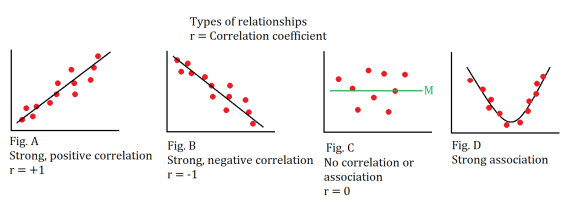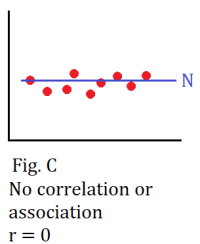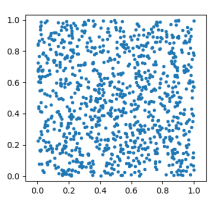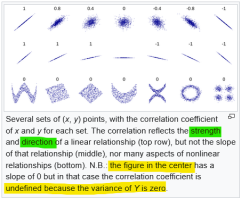Agent Smith
Full Member
- Joined
- Oct 18, 2023
- Messages
- 294

These are scatter plots of 2 variables.
My question is regarding Fig. C. Visually we can discern the absence of either a positive/negative trend. In this case the correlation coefficient r = 0.
I drew the green horizontal line M to represent the fact that correlation is 0. Change in the independent variable (x - axis) is not accompanied by corresponding trend changes in the dependent variable (y axis). The line M itself is quite arbitrary I think. My aim was to show that the 2 variables in question are not correlated. My hunch is that the green line shows that as the variable on the x - axis varies, the variable on the y - axis doesn't respond "appropriately" (per the green line B, it remains constant). Is this a valid way to represent absence of correlation?
For comparison is the image below, where the blue line N is a good fit for the scatter plot. This too will compute to 0 correlation.



